Enclave, Turbo Verano lead Buick into 2013
By John Gilbert
LOUISVILLE, KY. — Buick surprised a lot of observers by escaping the ax when General Motors tried to hold off an inevitable bankruptcy by eliminating the Pontiac, Oldsmobile and Saturn brands. It was a surprise because Pontiac always had been GM’s performance-oriented line, Oldsmobile had become an outlet for progressive and high-tech engines, and Saturn had been a younger oriented new-age brand, while Buick’s reputation was strong only with aging loyalists.
But Buick had established a foothold in China, which was emerging as a major world auto market, and GM took a major gamble and not kept the name alive, while trying to infuse its models with new blood and new life. Buick has paid the corporation back in spades already, and hopes to expand its market presence for the 2013 model year with a newly empowered Verano Turbo, and a revitalized Enclave SUV.
Buick summoned a gathering of the nation’s automotive media to Louisville for the first chance to drive the two new models. By comparison with some of the flashiest new competitive vehicles, the new Verano and Enclave don’t look strikingly different from the 2012 models. Their “beauty” is more than skin deep, and in fact is almost all under the skin.
The Enclave was a big hit when first introduced, and it has evolved into a major player as the top seller among luxury mid-size SUVs, such as the Acura MDX, Audi Q7, Lincoln MKT and Volvo XC90. Adding luxurious interior features and classy exterior styling gave the Enclave a higher status than its body-on-frame siblings at Chevrolet and GMC. In its fifth year, Buick sold 57,783 Enclaves, and it has proven to be the largest selling Buick model through 2012. So for 2013, changes are subtle, with a new grille that stands taller, flanked by new fenders, while new LED lighting front and rear and interior refinements are the biggest changes.
With the same 3.6-liter V6, improved with direct-injection technology for smoother distribution of its 288 horsepower and 270 foot-pounds of torque, and a 4,500-pound towing maximum, the Enclave can house either seven or eight occupants in its three rows of seats. It is 201.9 inches long, on a 118.9-inch wheelbase and it weighs 4,724 with front-wheel drive, or 4,922 with all-wheel drive. A refined suspension combines cornering stability with traditionally compliant comfort. With highway estimates no more than 22 mpg with AWD and 24 with FWD, the Enclave depends more on its power and luxurious qualities than fuel economy, but the formula has worked. Buick officials put their objective simply, to “improve the things that can be improved, and keep the things that worked well.” Read more
Fusion, Dart among U.S. favorites for Car of Year
By John Gilbert
The Ford Fusion and Dodge Dart are among the favorites from Detroit’s traditional “Big Three” that reached the short list of candidates for the 2013 North American Car of the Year award. There are five domestic nameplantes, joining five more from Japan and one from Germany that comprise the 11 cars selected by 50 independent automotive journalists.
Along with the high-style and high-tech new Fusion, and the upstart Dart compact, which combines U.S., Italian and Korean technology, the Cadillac ATS, Chevrolet Malibu, and Lincoln MKZ also made the list. Highly acclaimed Japanese competitors include the Honda Accord, Nissan Altima, Toyota Avalon, and the controversial pair of identical sports coupes in the Subaru BRZ and Toyota’s Scion branded BRZ. The only European car to make the list is a formidible one, the BMW 3-Series.
The companion North American Truck of the Year finalists include another pair of favorites — the Ram 1500 and the Ford Escape — which are two of three Detroit based candidates, joined by four Japanese, two German and one Korean among 10 contending vehicles. The compact van-like Ford C-Max joined the refined Ram 1500 from Chrysler Group, and the completely restyled Escape compact SUV, along with Germany’s Audi allroad, and the newly introduced BMW X1, while the Asian contingent includes the Acura RDX, Infiniti JX-35, Nissan Pathfinder, Mazda CX-5, all from Japan, and the Hyundai Santa Fe from Korea.
As one of 50 jury members who spent much of this year test-driving and attending introductions for the new 2013 models, I must say it is perhaps the most competitive year ever for candidates. Reducing all the completely new or significantly redesigned vehicles required votes from all the jurors, who now will reevaluate the candidates before voting to determine the top three cars and trucks. After that vote is taken in December, jurors will conduct final tests of the top three cars and top three trucks to determined the winners, which will be named at the 2013 North America n International Auto Show in Detroit in early January.
After the short list was announced, jury members interacted on a spirited debate concerning the FR-S and the BRZ. The two low, sleek sports coupes were built jointly by Toyota and Subaru, with Subaru building the flat-opposed, 200-horsepower 4-cylinder engine, and Toyota underwriting the expense and doing most of the styling. Many jury members expressed the opinion that since the cars are virtually identical, except for instrumentation and radio differences, they should be listed as a single entry, and the feeling persists that in the final voting, jurors will split their votes between the two in selecting one over the other, which will make it extremely unlikely either could win. Other jurors stated that a joint winner would be unprecedented, so the two should remain separate despite being essentially identical. Final decision on that matter is pending discussion by the jury’s steering committee. Read more
Lexus LS packs punch with its luxury
By John Gilbert
BIRMINGHAM, MICH. — There can be no better measuring stick of how far the Lexus brand has come in its 13-year history than working through all the various models until you come face to face with the new 2013 Lexus LS sedans.
The new car is loaded with all the imaginable electronic gizmos and features for which Lexus has become known, and it is fully pleasurable to drive or to ride in, with excellent power that always is combined with luxurious touches throughout. There is even a breakthrough hybrid model, which is not unusual for Toyota and its luxury brand, and a special sporty model — which clearly IS unusual for Toyota, and rare for Lexus. Adding high-performance capabilities to the always luxurious LS models lifts the car to true, German sports-luxury sedan potential, and LS prices are expected to be from $70,000 to $120,000.
The new car’s styling alterations include high-intensity headlights, or optional LED headlights, which are standard on the 600h hybrid. The redesigned rear features horizontal taillights with inserts that look like three “Ls” stacked to either stand for Lexus, or Minnesotans can claim they’re hockey sticks. The restyled exterior carries over to the interior, where a redesigned dashboard features a huge, 12.3-inch navigation screen, positioned higher to be nearer to eye-level. It separates to allow multiple segments, such as a map, audio settings and climate control, all at the same time.
Everything is aimed at reducing driver fatigue. The center-stack and console controls can be operated without leaning out of the driver seat. That driver seat is a 16-way power unit, 12-way for the front passenger. The seat structure is of a new and different foam that cradles the pelvis in a lower seating position. The rear seat also has more luxury and controllable climate switches, and the elongated executive class has a center console, and a right-side power-rising ottoman.
LS buyers traditionally have appreciated special items that competitors lack. In the new model, you have climate control, and a climate controlled seat. You can set the climate control for 70 degrees, for example, but on a frigid night it will take a while for the interior air to reach 70. In the LS, a sensor in the seat recognizes your body heat’s temperature, and the steering wheel and seat heat up almost immediately to your body’s temperature. The clever plan is that if your hands and body feel warm, you’ll feel warm and it won’t matter if it takes a while for the inside air to reach 70. The device works on all four seats, and the “climate control concierge” lets you set all four seats individually. Read more
Fusion leaps ahead in styling, technology
By John Gilbert
SANTA MONICA, CALIF. — There is no ring hovering above the roof of the 2013 Ford Fusion, but there might as well be, because the completely revised midsize sedan clearly is Ford Motor Company’s the new “halo” vehicle. Ford has impressively redone its vast array of models, most of them over the past year or two, and as impressive as they are, they must fall in line behind the 2013 Ford Fusion.
The new Fusion might be the best and best-looking car ever turned out in Detroit, although General Motors and Chrysler loyalists would strongly argue. But while styling and beauty are definitely subjective, anyone finding fault with the new Fusion’s looks are welcome to raise their hand. The grille and front end resemble the exotic Aston Martin; the sloping rear window and “C” pillars blend into its tail similar to a German Audi A7 sports sedan; and the side offers a thoroughly modern silhouette not unlike an Acura TL of a previous generation. That’s a pretty impressive hat trick from which to draw comparisons.
Ford not only brings those appealing style elements together, it fills the Fusion with enough technology and features that its captivating appearance almost become secondary. Four new engines — and not a V6 among them — take up residence under the Fusion hood, and carry their share of the load, with the largest of the four being the most docile, with tricks such as turbocharging, new hybrid technology, all-wheel drive, plus four transmissions, are all available.
The Fusion already has carved a solid position in the midsize category, which is more competitive than ever, with new models of the Honda Accord, Nissan Altima, and Chevrolet Malibu, with more to come, plus stalwarts like the Toyota Camry, Hyundai Sonata, Kia Optima, and Volkswagen Passat redone in the last year or two. But the new Fusion lives up to nearly a full year of pre-introduction hype and hits the market well-prepared for the battles ahead.
Waves of journalists were brought to Los Angeles, and delivered up the coast to the Casa del Mar, a fancy resort hotel that opens out onto Santa Monica’s legendary beach. Actually, our first stop was three blocks up the street, where we saw a fleet of Fusions parked awaiting us. It was the first time we’d seen the car except on static displays at all of this past year’s auto shows and other major automotive events. But these were ready to move, and they were all hybrids.
In the Fusion scheme of things, a group of 4-cylinder engines gain appreciably from the emergence of EcoBoost technology, which is turbocharging smaller engines to make them respond like larger engines when prodded, but deliver smaller-engine fuel efficiency. The car has 4-cylinder engines with displacement ranging from 1.6 liters, to 2.0, and up to 2.5. Ironically, the 2.5 is the largest, but with no turbocharger and no hybrid boost it is the least powerful, although it can still attain 175 horsepower and an identical 175 foot-pounds of torque — both solid numbers in the midst of the midsizers.
The 2.5 is the standard engine in the basic “S” model Fusion, which has EPA fuel economy estimates of 22 city, 34 highway, and starts at a base price of $21,700. The SE is next, with a base starting at $23,700, with the SE Hybrid starting at $27,200, and the top of the line Titanium starting at $30,200.
Ford has set it up so buyers can choose optional engines and features form the option list in any model. The SE runs strong with an amazing little 1.6-liter EcoBoost engine, with EcoBoost being Ford’s name for its direct-injection and turbocharged technology. The turbo pushes the little 1.6 to 178 horsepower at 5,700 RPMs, with a 184-foot-pound supply of torque at a mere 2,500 RPMs, and EPA estimate of 22-34 miles per gallon.
The 2.0-liter EcoBoost 4 has similar EPA estimates (22 city, 33 highway), but kicks the power up to 240 horses at 5,500 RPMs and 270 foot-pounds of torque at 3,000 revs. Ford offers two numbers for both EcoBoost 4s, suggesting that if owners choose to use regular fuel the horsepower in the 1.6 is reduced from 178 to 171, and in the 2.0 it drops from 240 to 231. Premium fuel undeniably makes the engine perform a bit better, but it’s breakthrough engineering to build an engine that will also run on regular fuel, which can be priced at 20 cents or more under premium, and, at nearly $4 per gallon, can make a large difference at fill-up time. Read more
New Accord takes on midsize challenges
By John Gilbert
The Honda Accord has 36 years rising to prominence and staying there through eight generations, atop the midsize car segment. Things have changed. The completely redone 2013 Accord is just hitting showrooms in mid-September of 2012, and for the first time it faces unprecedented pressure to maintain its status.
At first glance, or more accurately first drive, the new ninth-generation Accord seems quite well equipped to hold its ground, with a smaller size for agility, and new engines and transmissions for improved fuel economy. The question is, does the Accord do enough to turn back cynical accusations that it has been slumbering for a decade, leaving the door open for competitors to catch, or pass it on the open road?
The first generation of the Accord was sold from 1976-81 and was built in Japan. Generation changes came in 1982, with the opening of the Marysville plant, and followed in 1986, 1990, 1994, 1998, 2003, 2008, and now, 2013.
The first seven generations broke an impressive trail. The eighth generation is the one that turned off some Honda loyalists, and therefore provides the challenge for the new car. Honda debated whether to make the eighth-gen car smaller, keep it the same size, or make it larger. There was some who wanted to reduce its length to make it more agile, but when Toyota introduced a new and larger Camry, Honda decided to make the 2008 Accord the largest car in the midsize category.
The current Accord has maintained its financial success, ranking No. 2 in retail sales through the first eight months of 2012, despite aging into its fifth year. But being larger, bulkier, less agile and less fuel-efficient also gave several competitors a good target. Hyundai with its 2011 Sonata, soared in popularity with a highly efficient 2.4-liter direct-injected 4-cylinder engine that raised the standards of power and fuel economy in the segment, and the new Camry, Nissan Altima, Chevrolet Malibu, Ford Fusion and others rallied to raise their standards, too.
Honda has addressed those competitors with the 2013 model, which has an overall length of 191.3 inches — 3.6 inches shorter than the current car — on an inch-shorter wheelbase of 109.3, yet increases interior room. The more stylishly sculptured form is filled with features and new technology, including a new hybrid system at the top of the model array.
Shoji Matsui joined Honda 30 years ago, just in time to work on the 1986 Accord, and he designed the new Accord. He said the new car, has “all the power of Honda, with no excuses. The sedan has the winning formula of universal styling, that will never get old. We didn’t want high side sills,” he added, without mentioning the Chrysler 300, Dodge Charger, Ford Taurus, or others that have that design. Read more


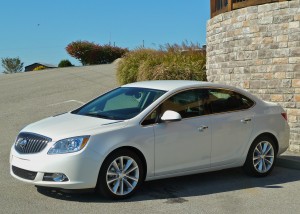
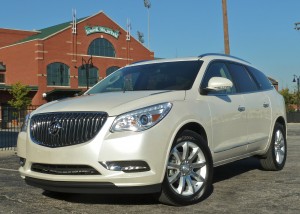
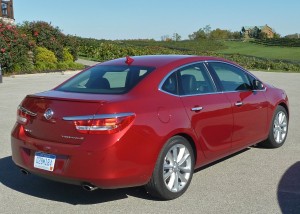
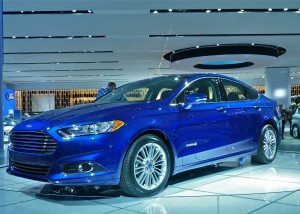

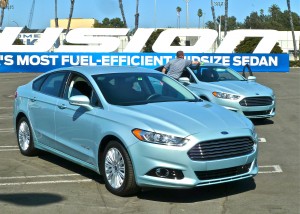
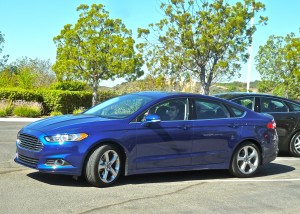
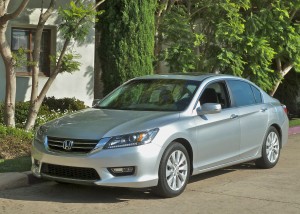
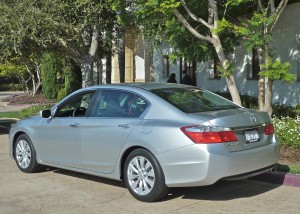
 John Gilbert is a lifetime Minnesotan and career journalist, specializing in cars and sports during and since spending 30 years at the Minneapolis Tribune, now the Star Tribune. More recently, he has continued translating the high-tech world of autos and sharing his passionate insights as a freelance writer/photographer/broadcaster. A member of the prestigious North American Car and Truck of the Year jury since 1993. John can be heard Monday-Friday from 9-11am on 610 KDAL(www.kdal610.com) on the "John Gilbert Show," and writes a column in the Duluth Reader.
John Gilbert is a lifetime Minnesotan and career journalist, specializing in cars and sports during and since spending 30 years at the Minneapolis Tribune, now the Star Tribune. More recently, he has continued translating the high-tech world of autos and sharing his passionate insights as a freelance writer/photographer/broadcaster. A member of the prestigious North American Car and Truck of the Year jury since 1993. John can be heard Monday-Friday from 9-11am on 610 KDAL(www.kdal610.com) on the "John Gilbert Show," and writes a column in the Duluth Reader.